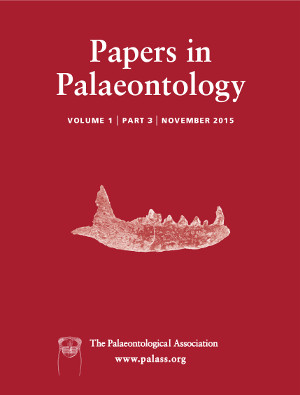Reg. Charity No. 1168330

New material from five localities in the Pragian and Emsian of the south-eastern Moroccan Tafilalt and Ma'der regions sheds new light on the morphology and function of the entire exoskeleton of kolihapeltine trilobites and on their ecology and taphonomy. Entire and articulated specimens are preserved in what appear to be slumped obrution deposits. Monospecific cavity infillings in the Hamar Laghdad mounds are considered to have resulted from transport of sclerites from nearby gregarious assemblages. Development of pronounced spinosity is mainly interpreted as a defensive strategy. The overall morphology, in particular the elongated shape of the tail, and the absence of strongly developed muscle attachment areas, points to an epibenthic bottom life rather than a swimming lifestyle. Evolutionary trends mainly concern morphological changes in the shape of the pygidia that narrow considerably and elongate through time. We provide a systematic assessment of the subfamily Kolihapeltinae. Hitherto poorly known species of Kolihapeltis Prantl and Přibyl are reviewed and their diagnoses completed; two new taxa, K. bassei sp. nov. and K. tafilaltensis sp. nov., are described. Sagittapeltis Kim is emended after revision of its type species S. triangularis. A new species, S. belkai sp. nov., is described. The genus Andegavia Pillet is discarded after we show that its type species is an indeterminable scutelluid fragment. The new genus Heliopeltis with two species, H. ihmadii gen. et sp. nov. and H. johnsoni gen. et sp. nov., is erected.